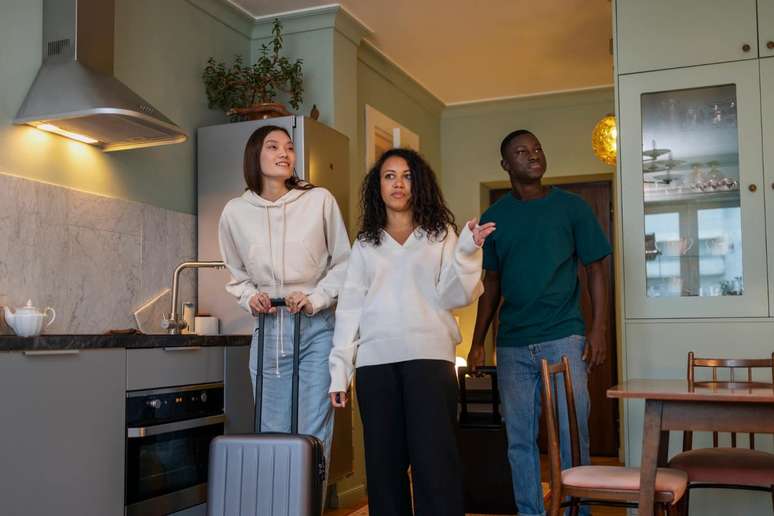About 4% of the adult population suffers from this disorder, which significantly disrupts routine
When we talk about ADHD (attention deficit hyperactivity disorder), it is common to think more of children and young people, age groups in which the manifestations are perhaps more evident. Psychomotor agitation, restlessness, difficulty maintaining attention in class, and aggression are some of the symptoms that may lead to referral to a doctor or mental health professional.
“But adults can also present symptoms of ADHD, many of them have never undergone an evaluation during childhood or adolescence, which makes diagnosis difficult in adulthood”, comments Jairo Bouer.
The World Health Organization estimates that approximately 4% of the world’s adult population suffers from ADHD. That’s because about two in three children with the disorder continue to show symptoms even after they grow up. In Brazil, the estimate is that 2 million adults are affected.
Most common symptoms in adults:
- Easily distracted
- Making decisions impulsively
- Starting businesses without reading the instructions
- Difficulty following the expected order of activities
- Bad organisation
- Not being able to pay attention during recreational activities
- Missed and failed commitments
- Always be in a hurry
- Being very impatient with everything and everyone
- Not being able to stop actions when you should
Variations
“ADHD is now seen much more as a syndrome in which symptoms can occur with different frequencies and intensities. And the impact of these symptoms can vary greatly from person to person,” explains Bouer.
Problems such as poor performance at work, frequent job changes, risky behaviors (such as having unprotected sex, reckless driving) and difficulties in interpersonal relationships are common losses in the lives of people with this disorder.
Although rarer, young people and adults with ADHD can still exhibit behaviors such as lack of care for their health and lifestyle, alcohol and drug abuse, and involvement in fights and incidents with the police.
Diagnosis
To diagnose ADHD in adults, it is necessary to confirm that the disorder was present in the child’s life, which is not always easy, since the person may not remember his entire childhood, and the parents may not be alive when he arrives. in diagnosis.
“It is normal that, when a child is diagnosed, you hear the father or mother say that they have experienced the same situation,” says psychiatrist Danielle Admoni, specialized in childhood and adolescence, who works at Unifesp (Federal University of São Paulo ). These adults say, according to the doctor, that they were called “stupid and lazy”, that they were beaten at home or at school because they could not sit still.
“Not treating ADHD causes immense damage: not only professionally, but also relationally,” he reports. Not to mention that, as you also note, many young people and adults begin to use drugs as a sort of self-medication to obtain relief from some symptoms.
Types of ADHD
There are three different types of ADHD, depending on which types of symptoms are strongest in the individual:
Prevalence of inattention: It is difficult for the individual to organize or complete a task, pay attention to details, or follow instructions or conversations. The person is easily distracted or forgets details of their daily routine.
Predominance of hyperactivity or impulsivity: the person becomes agitated and talks a lot. It is difficult to sit for a long time (for example while eating or doing homework). The individual feels restless and has problems with impulsiveness, that is, he often interrupts others, snatches things from people’s hands, or speaks at inappropriate times. It is difficult for the person to wait their turn or listen to instructions. An impulsive person may have more accidents and injuries than others.
Combined presentation: Symptoms of the above two types are equally present in the person.
It’s worth noting that ADHD symptoms can change over time, as the person ages.
Strategies for dealing with ADHD
Discover some strategies that can help you deal with ADHD more calmly:
1. Write everything down
Organizational tools are essential for people with ADHD in adulthood. They help you prioritize and track tasks for each day or for the next few weeks.
Supplies can include pen and paper for making lists or apps for setting reminders, highlighting important days on the calendar, marking due dates, and keeping other helpful information visible.
Set aside time each day to update your lists and plans. Don’t let the task become a chore in itself, treat it as something routine, like brushing your teeth. Do it every day so that it becomes an established habit.
Remember: smartphones and computers can also become a distraction. If you suffer from ADHD, you may end up spending hours looking at not-so-helpful apps or websites.
If this is a common mistake, a good option is to turn off notifications or keep your phone turned off or in another room while you try to work.
2. Organize the spaces
Staying organized doesn’t mean your work will get done. But some simple approaches can at least make this path easier:
- Give yourself an attractive work environment and keep important items easily accessible;
- Reduce distractions: This could mean changing your workspace so it doesn’t face a window, moving to a quieter location, or simply muting your smartphone and email alerts;
3. Prioritize time
Deadlines cause two major challenges when suffering from ADHD as an adult. First of all, it’s difficult to start a project, often because you want it to be perfect or because you’re intimidated by it and so you put it off. Secondly, when starting a project, it is very easy to get distracted and leave the task unfinished.
How can you avoid these pitfalls?
- Include procrastination in your to-do list and allow yourself a few minutes of distraction after each task;
- Deal with emails, phone calls or other matters as quickly as possible: that way, there will be fewer things hanging over your head and then overwhelming you;
- Use your watch more: The more aware you are of time, the more likely you are to avoid spending too much time on one activity;
- Do one thing at a time: Multitasking is overrated for everyone and a nightmare for people with ADHD. Focusing on completing one task and then moving on to the next;
- Be realistic about your time: This may mean having to say no to new projects or other commitments.
It’s worth noting that the ideas listed here can help you better cope with ADHD, but bigger challenges may arise. Therefore, seek support from a mental health professional who can provide more tools and coping strategies.
Source: Terra
Ben Stock is a lifestyle journalist and author at Gossipify. He writes about topics such as health, wellness, travel, food and home decor. He provides practical advice and inspiration to improve well-being, keeps readers up to date with latest lifestyle news and trends, known for his engaging writing style, in-depth analysis and unique perspectives.





-qhia6ba319wh.png)


